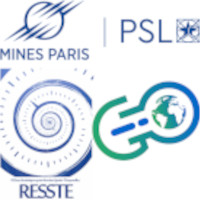In the context of geostatistical modeling of spatio-temporal data, it is usual to assume that these data can be represented by a Gaussian random field defined over a spatial domain. This approach allows not only to model the uncertainty one might have on the data, but also to perform such tasks as simulations and predictions while accounting for the spatio-temporal correlations observed in the data. In this talk, we present Gaussian process models to describe spatio-temporal data in the particular case where these lie on a surface. We propose to define the Gaussian random fields used to model the data as solutions of a stochastic partial differential equation (SPDE) defined on the surface. This SPDE approach to Gaussian processes has been
extensively used to model spatio-temporal data on Euclidean domains [2], and extended to model spatial data on surfaces (see eg. [3]) and more generally on Riemannian manifolds [1]. Our aim is now to further generalize this last approach to the spatio-temporal setting by considering an advection-diffusion SPDE, and propose matrix-free algorithms for sampling and predicting the resulting random fields.
[1] A. Lang and M. Pereira. Galerkin–Chebyshev approximation of Gaussian random fields on compact Riemannian manifolds. arXiv preprint arXiv:2107.02667, 2021.
[2] F. Lindgren, D. Bolin, and H. Rue. The SPDE approach for Gaussian and non-Gaussian fields: 10 years and still running. Spatial Statistics, 50:100599, 2022.
[3] A. F. Mejia, Y. Yue, D. Bolin, F. Lindgren, and M. A. Lindquist. A Bayesian general linear modeling approach to cortical surface fMRI data analysis. Journal of the American Statistical Association, 115(530):501–520, 2020.
- Poster

 PDF version
PDF version

